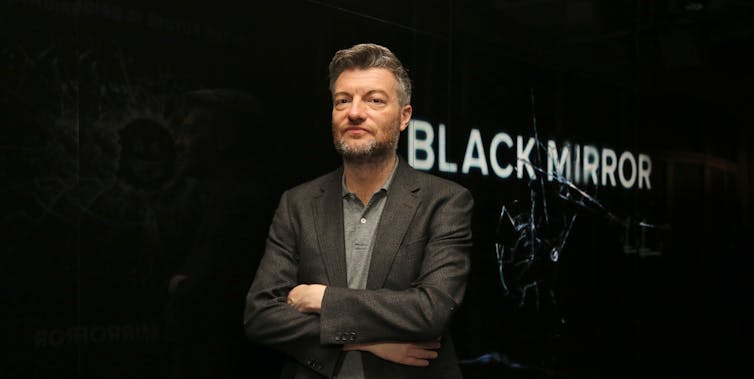
Richard Hand ne travaille pas, ne conseille pas, ne possède pas de parts, ne reçoit pas de fonds d'une organisation qui pourrait tirer profit de cet article, et n'a déclaré aucune autre affiliation que son organisme de recherche.
University of East Anglia apporte un financement en tant que membre adhérent de The Conversation UK.
Voir les partenaires de The Conversation France
The Netflix series Black Mirror is a supreme example of contemporary television fantasy. It is hard to think of any other modern show that is so constantly unpredictable, aesthetically accomplished, stylistically eclectic or downright disturbing.
Over 19 self-contained episodes split into four series, Black Mirror seamlessly blurs genre boundaries – science fiction, horror, thriller and satire all meld into one another.
But despite the eclectic sense of genre, Black Mirror is united by the theme of digital technology. The name of the programme itself refers to a turned off phone, television or any of the other screens that dominate our lives – the haunting black screen like a mirror. It seeks to identify the radical changes brought about by digital technology and push them to their logical conclusion.
Just as the pioneering science fiction of the 19th century incorporated the scientific discoveries and technology of the industrial revolution, so Black Mirror pushes our contemporary experience of the digital revolution into possible projections of the future.

Black Mirror is the creation of Charlie Brooker, a figure formerly best known for his satirical journalism and biting assessments of popular culture. Appearing on BBC’s Desert Island Discs radio programme, he recently recounted how he spent years screaming at the television: “I could do better than that!” With Black Mirror, he probably has.
As well as drawing on the foundations of science fiction, Black Mirror belongs to the rich tradition of dark fantasy on television. Even the monochrome opening sequence of a buffering signal and cracking screen pays homage to the opening credits of The Outer Limits – the 1960s TV series which informed viewers they had lost control of their televisions.
The Outer Limits and Black Mirror both draw emphatic attention to the very technology being used by viewers. Half a century ago, The Outer Limits (and the even more successful The Twilight Zone) used television to present metaphors of social anxieties, including communism, the loss of social values and technophobia. These were quintessential examples of television fantasy. Where better to disquiet and unnerve us than in the safety and comfort of our own homes?
Black Mirror is a direct descendant of these shows. It examines the increasingly complex technological systems of our domestic environments and ways of living in the 21st century – making both seem dangerous and fragile.